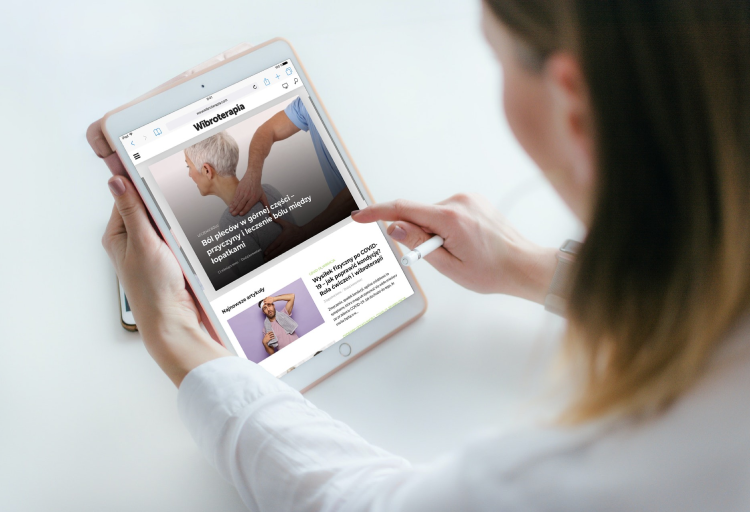How to take care of a person with disabilities
The moment when you take on the role of carer for someone with a disability often comes unexpectedly. A loved one may have an accident or experience a serious illness, leading to a loss of independence - temporary or permanent. Other times, you may be gradually preparing to care for a grandmother, wife or son who has been struggling with a chronic illness for years.
Whatever the circumstances, when you make the decision to care for a loved one, you usually don't fully know what challenges - both practical and emotional - you will face. No one can predict this.
That's why we've put together a mini-guide that highlights the most important aspects of caring for someone with a disability.
What do you need to keep in mind at all times when you are caring for a person with a disability?
Read the 8 points and find out what is most important in caring for someone with a disability:
Understanding needs and empathy are key to providing appropriate care for a person with a disability, as they allow you to tailor support to individual needs and build a relationship based on mutual trust and understanding.
Know the needs: Gather information by talking to both the person with a disability and their doctors, therapists and carers. Create a safe space where everyone is free to express their physical, emotional and social needs. During these conversations, try to be fully present and empathetic, paying attention to the nuances and subtleties of signals that may indicate needs that are not always expressed in words.
Empathy: All interventions should be carried out with a deep understanding of the challenges that the person with a disability faces on a daily basis. Try to see the world from his or her perspective, appreciating every barrier he or she faces and looking for ways to address it. Instil understanding and respect for experiences that may be different from your own, but are equally valid and worthy of consideration.
Communication plays a key role in providing the right care for a person with a disability. When we are able to understand their needs and experiences and show empathy, we can better tailor our support to their individual needs. This allows us to build relationships based on mutual trust and understanding, which is the foundation of effective care and support.
Clarity: try to use simple language, avoiding complicated sentences and difficult terms. Explain things in a clear and understandable way so that the person with a disability can easily understand what you are talking about.
Time: Be patient and give the disabled person enough time to understand the question and answer. Take your time and allow them to express their thoughts and feelings without pressure.
Take into account different methods of communication: If the person has difficulty speaking, look for alternative methods of communication such as alphabet slates, tablet communicators or gestures. Give her the opportunity to choose the method of communication that best suits her and that enables her to express herself comfortably and effectively.
It is important to tailor support to the individual needs and preferences of each person with a disability. This may include support with dressing, feeding, washing, getting around the house or shopping. It is also important to provide tools or assistive technology that can make daily activities easier.
Autonomy: Encouraging the person with a disability to perform activities independently whenever possible is key to building their self-esteem and independence. Support in acquiring skills can contribute to their confidence and self-esteem. Therefore, it is important not only to help them with specific activities, but also to encourage them to try new things and develop skills, even if this requires patience and time.
Assistance with daily activities: Support with daily activities that may be difficult is vital for people with disabilities. This may include assistance with dressing, eating, maintaining personal hygiene or getting around. It is important to provide this assistance in a way that respects the dignity and intimacy of the person, while remaining empathetic and patient. Assistance should be tailored to the individual's needs and preferences to enable them to be as autonomous and independent as possible in carrying out daily activities.
Safety is a fundamental aspect of caring for people with disabilities and is a priority issue in their daily lives. Ensuring appropriate safety conditions not only minimises the risk of accidents and injuries, but also has a positive impact on their sense of comfort and autonomy.
Adapting the environment: It is extremely important to ensure that the place where a person with a disability resides is safe and appropriately adapted to their needs. Eliminating potential hazards, such as a sharp corner of a piece of furniture or a slippery floor, can significantly reduce the risk of injury and accidents. Review the environment regularly to identify potential hazards and take appropriate steps to remove or minimise them.
Injury prevention: It is important to be alert to signs of possible dangers and take appropriate precautions to prevent injury. This may include installing handrails at stairs, non-slip rugs in the bathroom, or using special assistive devices that can increase the safety of the person with a disability. Regularly monitoring the environment and responding to potential hazards can significantly reduce the risk of injury and provide greater safety and comfort for the disabled person.
Regularity in caring for the health of people with disabilities is key to maintaining their physical and mental well-being and minimising the risk of more serious health problems.
Regular medical appointments: Ensuring regular follow-up visits to medical professionals is key to monitoring the health of the person with a disability. It is during these visits that doctors can assess the progress of treatment, identify possible health problems and adjust therapeutic plans. Through regular examinations and consultations, it is possible to react quickly to possible health risks and minimise the risk of more serious complications.
Balanced diet and physical activity: Helping a disabled person to maintain a healthy diet is key to ensuring adequate energy levels and improving overall health. Providing balanced meals, rich in essential nutrients, and encouraging regular physical activity can have numerous benefits, including improved muscle strength, coordination and mental wellbeing. It is also important to tailor a programme of physical activity and physiotherapy to the individual's capabilities and needs to avoid overload or injury.
Emotional support plays a key role in the lives of people with disabilities, as they may experience a variety of emotional challenges related to their health condition, social acceptance, or physical limitations.
Be supportive: It is important to be supportive of the person with a disability by actively listening and expressing understanding of their emotions. Providing support in difficult situations can include showing empathy, finding solutions together and offering emotional support. Allow the person to feel heard and understood, which can contribute to their wellbeing and coping with difficulties.
Stay positive: Helping the person with a disability to stay positive can have a significant impact on their wellbeing and motivation to keep going. Express gratitude for progress made, acknowledge effort and plan for the future together, focusing on opportunities and goals to be achieved. Creating a positive atmosphere that promotes mutual support and acceptance can make a significant contribution to improving the quality of life of the person with a disability.
"Take care of yourself too" is not just advice or a slogan, it is an important principle that reminds us that caring for others does not mean forgetting our own needs. It is a reminder that our mental and physical health is just as important as caring for others.
It is also an encouragement to reflect on our own boundaries and our ability to prioritise ourselves. By taking care of ourselves, we are better able to function as carers and give support to others.
Take care of yourself: when caring for someone with a disability, it is also important to take care of your own needs and mental health. Don't forget to find time for rest, relaxation and activities that you enjoy. Ensure regular sleep, a good diet and regular physical activity. Use the support available from family and friends to relieve the burden of caring responsibilities and find time for yourself.
Development: Continuous personal development can be an important part of looking after yourself as a carer. Look for development opportunities such as carer training or support groups that can provide you with knowledge and emotional support. Remember that sharing experiences with other carers can not only be helpful but also therapeutic. Don't be afraid to ask for support and use the resources available that can help you to better manage your caring responsibilities and look after your own mental health.
Home rehabilitation can be a key part of a disabled person's care, enabling them to continue their therapy and work on improving their physical condition in the comfort of their home environment. One method that can be used in home rehabilitation is vibrotherapy.
Vibrotherapy uses vibration to stimulate muscles and tissues, which can provide numerous benefits to the rehabilitation process. Vibrotherapy equipment can be used to relieve pain, improve blood circulation, increase muscle flexibility and improve motor coordination.
Using vibration therapy in a home environment can be convenient and effective, allowing the disabled person to have regular therapy at a convenient time and place. Introducing vibration therapy into a rehabilitation programme can complement traditional therapeutic methods, contributing to better rehabilitation outcomes.


Sprzęt nie tylko dla chorego

Vitberg MED Home
Equipment not only for the patient
Benefits of vibration therapy

No side effects

Action confirmed by scientists and practitioners

Perceptible effects from 1 treatment

Long-lasting effects through systematic use






